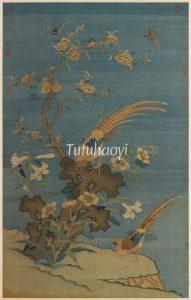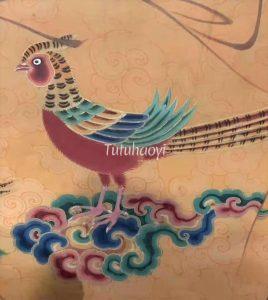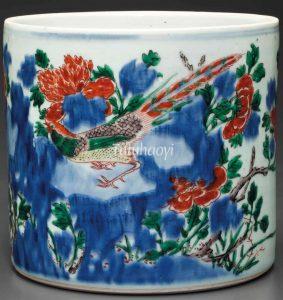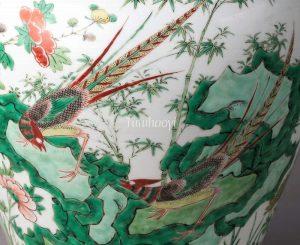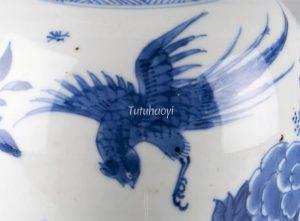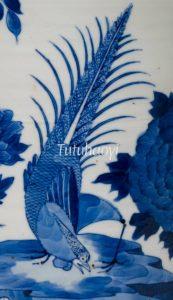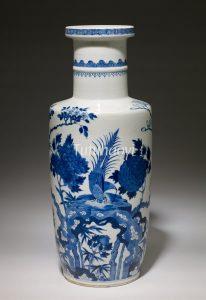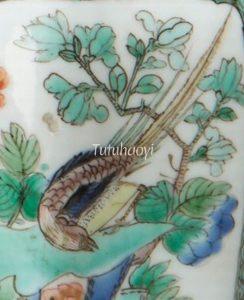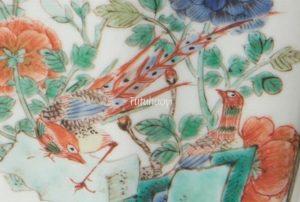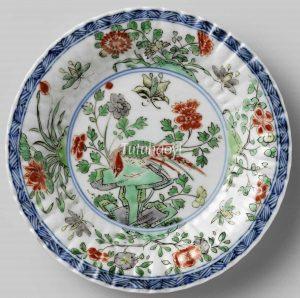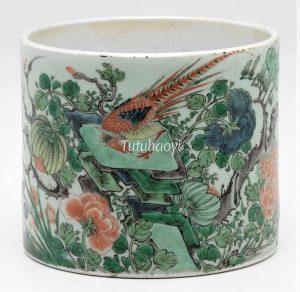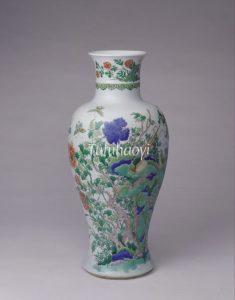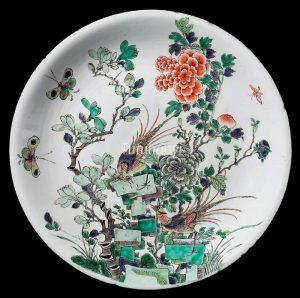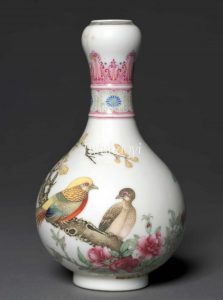Pheasant
雉鸡 (长尾雉)
© Tutuhaoyi.com owns the copyright of the description content for the images attached. Quoting all or part of the description content on this page is permitted ONLY IF ‘Tutuhaoyi.com’ is clearly acknowledged anywhere your quote is produced unless stated otherwise. (本页描述内容版权归Tutuhaoyi.com所有,转发或引用需注明 “Tutuhaoyi.com”, 侵权必究, 已注开源信息的条目除外。)
The zhi pheasant 雉, also called Huachong 华虫 in ancient China, is one of the most popular birds depicted in traditional Chinese art. Due to its characteristic multicoloured long-tail, the pheasant is associated with the wide-ranging literary talents of the emperor. It is also used in pun rebus pictures, as ‘zhi’ pheasant in the bird’s full Chinese name ‘chang wei zhi 长尾雉’ (long tailed pheasant) puns on another Chinese word ‘zhi 治’ (meaning ‘to regulate’). Artworks containing this motif express the wish to the emperor to govern a country for a long time.
The pheasant is often presented in combination with shou shi (寿石, rocks symbolising for longevity), the peony or the quail to serve their symbolic or pun rebus purposes.
Due to its unique look, the pheasant is to be differentiated from the ordinary rooster, the phoenix, and the crane.
Related Pun Rebus Picture:
May the country enjoy peace and good order permanently 长治久安
Related Symbolic Pictures:
What does a daily life scene of cooking have to do with politics?
Fig 1: silk kesi scroll, Song dynasty (960–1279), courtesy of the National Palace Museum, Taipei
Fig 2-3: portrait painting of Ming Emperor, Hongzhi period (1488–1505), Ming dynasty, courtesy of the National Palace Museum, Taipei
Fig 4: famille verte brush pot, c.1650–60, courtesy of Christie’s Auction House, 2015, previous collection of Julia and John Curtis.
Fig 5-7: famille verte porcelain jar, mid to late 17th century, courtesy of the Metropolitan Museum of Art, New York
Fig 8: famille verte Gu-shaped vase, Kangxi (1662–1722) period, Qing dynasty, courtesy of the Museum of Fine Arts, Boston
Fig 9-12: porcelain vase with underglaze blue decoration, mid to late 17th century, Qing dynasty, courtesy of the Metropolitan Museum of Art, New York
Fig 13-14: porcelain vase with underglaze blue decoration, Kangxi period (1662–1722), Qing dynasty, courtesy of Minneapolis Institute of Art
Fig 15-18: famille verte porcelain vases, Kangxi period (1662–1722), Qing dynasty, courtesy of Minneapolis Institute of Art
Fig 19: famille verte porcelain saucer, c. 1700 – c. 1724, courtesy of the Rijksmuseum, Amsterdam
Fig 20: famille verte brush holder, Kangxi (1662–1722) period, Qing dynasty, courtesy of the National Gallery of Victoria, Melbourne. Photo: National Gallery of Victoria, Melbourne
Fig 21: famille verte porcelain vase, Kangxi (1662–1722) period, Qing dynasty, courtesy of Palace Museum, Beijing
Fig 22: famille verte vase, Kangxi period (1662-1722), Qing dynasty, courtesy of the National Palace Museum, Taipei
Fig 23: famille verte porcelain dish, Kangxi (1662–1722) period, Qing dynasty, courtesy of the Museum of Fine Arts, Boston
Fig 24: garlic-head falangcai enamelled porcelain vase, Qianlong period (1736–95), Qing dynasty, courtesy of The Cleveland Museum of Art
Fig 25: falangcai enamelled porcelain vase, Qianlong period (1736–95), Qing dynasty, courtesy of Tianjin Museum, China
